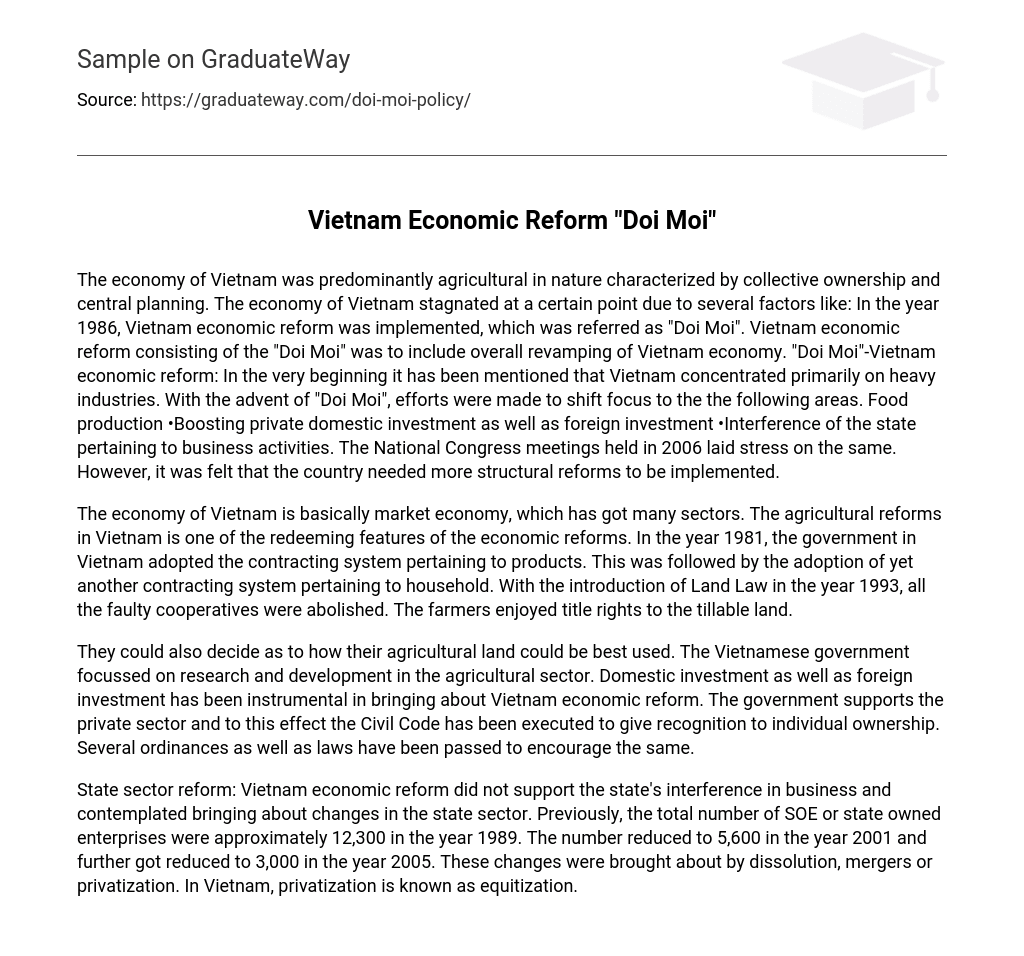The economy of Vietnam was predominantly agricultural in nature characterized by collective ownership and central planning. The economy of Vietnam stagnated at a certain point due to several factors like: In the year 1986, Vietnam economic reform was implemented, which was referred as “Doi Moi”. Vietnam economic reform consisting of the “Doi Moi” was to include overall revamping of Vietnam economy. “Doi Moi”-Vietnam economic reform: In the very beginning it has been mentioned that Vietnam concentrated primarily on heavy industries. With the advent of “Doi Moi”, efforts were made to shift focus to the the following areas. Food production •Boosting private domestic investment as well as foreign investment •Interference of the state pertaining to business activities. The National Congress meetings held in 2006 laid stress on the same. However, it was felt that the country needed more structural reforms to be implemented.
The economy of Vietnam is basically market economy, which has got many sectors. The agricultural reforms in Vietnam is one of the redeeming features of the economic reforms. In the year 1981, the government in Vietnam adopted the contracting system pertaining to products. This was followed by the adoption of yet another contracting system pertaining to household. With the introduction of Land Law in the year 1993, all the faulty cooperatives were abolished. The farmers enjoyed title rights to the tillable land.
They could also decide as to how their agricultural land could be best used. The Vietnamese government focussed on research and development in the agricultural sector. Domestic investment as well as foreign investment has been instrumental in bringing about Vietnam economic reform. The government supports the private sector and to this effect the Civil Code has been executed to give recognition to individual ownership. Several ordinances as well as laws have been passed to encourage the same.
State sector reform: Vietnam economic reform did not support the state’s interference in business and contemplated bringing about changes in the state sector. Previously, the total number of SOE or state owned enterprises were approximately 12,300 in the year 1989. The number reduced to 5,600 in the year 2001 and further got reduced to 3,000 in the year 2005. These changes were brought about by dissolution, mergers or privatization. In Vietnam, privatization is known as equitization.





